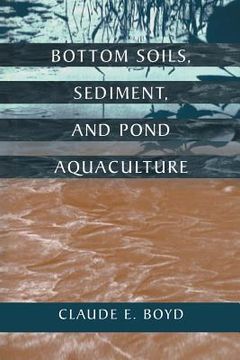Share
Bottom Soils, Sediment, and Pond Aquaculture (in English)
Boyd, Claude E. (Author)
·
Springer
· Paperback
Bottom Soils, Sediment, and Pond Aquaculture (in English) - Boyd, Claude E.
$ 208.41
$ 219.99
You save: $ 11.58
Choose the list to add your product or create one New List
✓ Product added successfully to the Wishlist.
Go to My WishlistsIt will be shipped from our warehouse between
Friday, June 07 and
Monday, June 10.
You will receive it anywhere in United States between 1 and 3 business days after shipment.
Synopsis "Bottom Soils, Sediment, and Pond Aquaculture (in English)"
Aquaculture pond managers measure water-quality variables and attempt to maintain them within optimal ranges for shrimp and fish, but surprisingly little attention is paid to pond soil condition. Soil-water interactions can strongly impact water quality, and soil factors should be considered in aquaculture pond management. The importance of soils in pond management will be illustrated with an example from pond fertilization and another from aeration. Pond fertilization may not produce phytoplankton blooms in acidic ponds. Total alkalinity is too low to provide adequate carbon dioxide for photosynthesis, and acidic soils adsorb phosphate added in fertilizer before phytoplankton can use it. Agricultural lime- stone application can raise total alkalinity and neutralize soil acidity. The amount of limestone necessary to cause these changes in a pond depends on the base unsaturation and exchange acidity of the bottom soil. Two ponds with the same total alkalinity and soil pH may require vastly different quantities of limestone because they differ in exchange acidity. Aeration enhances dissolved oxygen concentrations in pond water and permits greater feed inputs to enhance fish or shrimp production. As feeding rates are raised, organic matter accumulates in pond soils. In ponds with very high feeding rates, aeration may supply enough dissolved oxygen in the water column for fish or shrimp, but it may be impossible to maintain aerobic conditions in the surface layers of pond soil. Toxic metabolites produced by microorganisms in anaerobic soils may enter the pond water and harm fish or shrimp.
- 0% (0)
- 0% (0)
- 0% (0)
- 0% (0)
- 0% (0)
All books in our catalog are Original.
The book is written in English.
The binding of this edition is Paperback.
✓ Producto agregado correctamente al carro, Ir a Pagar.

